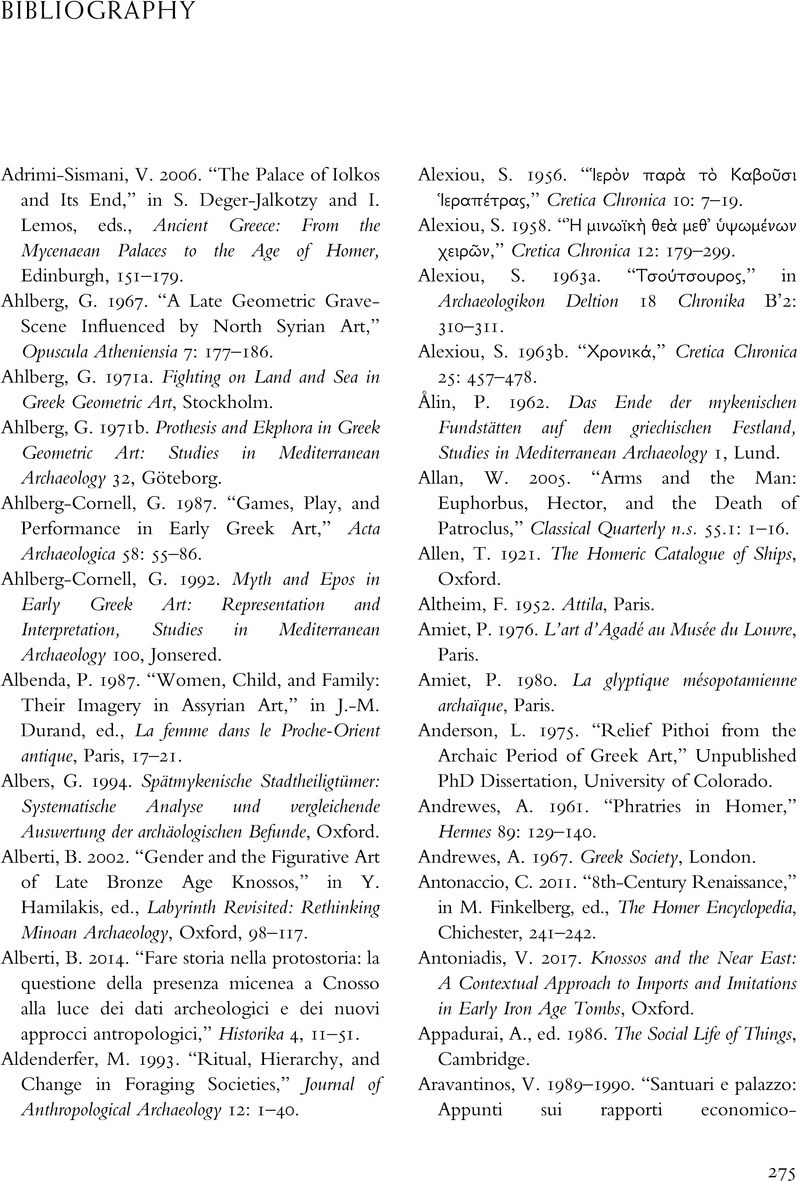Book contents
- Male Nudity in the Greek Iron Age
- Male Nudity in the Greek Iron Age
- Copyright page
- Dedication
- Contents
- Plates
- Figures
- Tables
- Preface
- Acknowledgments
- Chapter One Introduction
- Chapter Two Naked Male Figurines in the EIA Aegean
- Chapter Three Iconographic and Regional Patterns in EIA Naked Male Figurines and the History of Ritual Action
- Chapter Four The Lost Wax Method of Production of EIA Bronze Figurines
- Chapter Five Bronze Figurines, Transformative Processes, and Ritual Power
- Chapter Six EIA Nudity and Ritual in Historical Perspective
- Chapter Seven Method and Approach in the Archaeology of the EIA Aegean
- Book part
- Bibliography
- Index
- Plate Section (PDF Only)
- References
Bibliography
Published online by Cambridge University Press: 04 September 2022
- Male Nudity in the Greek Iron Age
- Male Nudity in the Greek Iron Age
- Copyright page
- Dedication
- Contents
- Plates
- Figures
- Tables
- Preface
- Acknowledgments
- Chapter One Introduction
- Chapter Two Naked Male Figurines in the EIA Aegean
- Chapter Three Iconographic and Regional Patterns in EIA Naked Male Figurines and the History of Ritual Action
- Chapter Four The Lost Wax Method of Production of EIA Bronze Figurines
- Chapter Five Bronze Figurines, Transformative Processes, and Ritual Power
- Chapter Six EIA Nudity and Ritual in Historical Perspective
- Chapter Seven Method and Approach in the Archaeology of the EIA Aegean
- Book part
- Bibliography
- Index
- Plate Section (PDF Only)
- References
Summary

- Type
- Chapter
- Information
- Male Nudity in the Greek Iron AgeRepresentation and Ritual Context in Aegean Societies, pp. 275 - 318Publisher: Cambridge University PressPrint publication year: 2022



